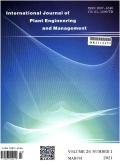iB1350: Part 2 — Level1 PRA Considering Optimization of Safety Systems for the iB1350
International Journal of Plant Engineering and Management
Pub Date : 2018-07-22
DOI:10.1115/ICONE26-82552
引用次数: 0
Abstract
iB1350 stands for an innovative, intelligent and inexpensive BWR 1350. It is the first Generation III.7 reactor after the Fukushima Daiichi accident, and has incorporated both the lessons learned from the Fukushima Daiichi accident and the WENRA safety objectives. It has a double cylinder RCCV (Mark W containment) and an in-depth hybrid safety system (IDHS). The IDHS currently consists of 4 division active safety systems for a DBA, and 2 division active safety systems as well as built-in passive safety systems (BiPSS) consisting of an isolation condenser (IC) and an innovative passive containment cooling system (iPCCS) for a Severe Accident (SA), which brings the total to 6 division active safety systems. Taking into account of excellent feature of the BiPSS, the IDHS has potential to optimize its 6 division active safety systems. The iPCCS that composes the BiPSS has been enhanced and has greater capability to remove decay heat than the conventional PCCS. While the conventional PCCS never can cool the S/P, the iPCCS can automatically cool the S/P directly with benefits from the structure of the Mark W containment. That makes it possible for the iB1350 to cool the core using only core inject systems and the iPCCS without RHR system: conventional active decay heat removal system. To make the most of this excellent feature of the iPCCS, it is under consideration to take credit for the iPCCS as safety systems for a DBA to optimize configuration of the IDHS. Currently, there are several proposed configurations of the IDHS that are expected to achieve cost reduction and enhance its reliability resulting from passive feature of the iPCCS. To compare those configurations of the IDHS, Level 1 Internal Events Probabilistic Risk Assessment (PRA) and sensitivity analyses considering external hazards have been performed for each configuration to provide measure of plant safety.iB1350:第2部分-考虑iB1350安全系统优化的一级PRA
iB1350代表一种创新,智能和廉价的BWR 1350。这是福岛第一核电站事故后的第一个III.7代反应堆,它吸取了福岛第一核电站事故的教训和WENRA的安全目标。它有一个双缸RCCV (Mark W安全壳)和一个深度混合安全系统(IDHS)。IDHS目前由4个DBA分部主动安全系统和2个分部主动安全系统以及内置被动安全系统(BiPSS)组成,该系统由隔离冷凝器(IC)和用于严重事故(SA)的创新被动密封冷却系统(iPCCS)组成,总共有6个分部主动安全系统。考虑到BiPSS的优异特性,IDHS有潜力优化其6级主动安全系统。组成BiPSS的iPCCS已经得到了增强,并且比传统的PCCS具有更大的去除衰变热的能力。虽然传统的PCCS永远不能冷却S/P,但iPCCS可以利用Mark W容器的结构直接自动冷却S/P。这使得iB1350可以只使用堆芯注入系统和iPCCS来冷却堆芯,而不使用RHR系统:传统的主动衰变散热系统。为了充分利用iPCCS的这一优秀特性,正在考虑将iPCCS作为DBA优化IDHS配置的安全系统。目前,由于iPCCS的被动特性,IDHS的几种配置方案有望实现成本的降低和可靠性的提高。为了比较IDHS的这些配置,对每种配置进行了一级内部事件概率风险评估(PRA)和考虑外部危害的敏感性分析,以提供工厂安全措施。
本文章由计算机程序翻译,如有差异,请以英文原文为准。
求助全文
约1分钟内获得全文
求助全文

 求助内容:
求助内容: 应助结果提醒方式:
应助结果提醒方式:


